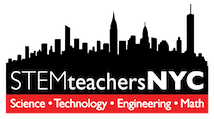In the ever-evolving landscape of education, computational thinking has emerged as a powerful tool to enhance learning experiences and foster critical thinking skills. Recently, we had the privilege of sitting down with two influential educators, Kate Macaulay and Judith Seidel, who shared their experiences and strategies in integrating computational thinking into classrooms. Their journey offers valuable insights into the development and implementation of the computational thinking course at Brooklyn College.
Meet the Educators
Kate Macaulay is a seasoned science teacher at Hunter College Elementary School and plays a leadership role in the elementary education initiative with STEM Teachers NYC. Her extensive experience brings a wealth of knowledge to the field of computational thinking in education.
Judith Seidel is a computer science teacher at Friends Seminary. With a background in teaching computer science and work with the Children’s International Film Festival, Judith brings a unique perspective to the integration of computational thinking across various disciplines.
The Evolution of Computational Thinking in Education
The computational thinking course at Brooklyn College has an interesting origin story. Kate explains, “Several years back, I was part of an initiative through STEM Teachers NYC in conjunction with Cornell Tech. Cornell Tech reached out to evolve their work with computational thinking into a professional development course for teachers.”
This collaboration aimed to create standalone professional development opportunities focused on integrating computational thinking into various curriculums. What started as a course primarily attracting educators from independent schools due to its association with computer technology, eventually grew to serve a broader audience, including public school teachers.
Judith emphasizes the versatility of computational thinking: “The framework is extremely useful in many disciplines, not only in computer science, providing skills to break down problems into manageable parts and use computational thinking language effectively.”
Real-World Applications and Transformative Projects
The course guides educators to design practical and reflective projects that foster computational thinking among students. Judith shared some remarkable examples:
- A third-grade teacher in Staten Island working with special needs students developed a game based on a children’s book to engage her students in computational thinking.
- A high school project using Scratch to create a story addressing the concept of consent in dance scenarios, utilizing creative characters to stimulate discussions about boundaries and respect.
Kate highlights the importance of creating student reflection tools: “Seeing how educators teaching non-verbal students designed these tools compared to those teaching high school art classes is incredibly insightful. It shows the adaptability and significance of computational thinking across various educational contexts.”
More Than Just a Workshop
Both educators stress that the computational thinking course offers more depth and sustained impact compared to single-day workshops. Judith notes, “There’s more accountability and deeper learning in the course format, with continuous reflection and application of knowledge over time.”
Kate adds, “The course builds a cohort relationship among participants, fostering a community where they can troubleshoot challenges together and inspire one another. This ongoing collaboration is crucial for navigating real-world educational constraints.”
Advice for Educators Embracing Computational Thinking
For educators looking to integrate computational thinking into their practice, our experts offer the following advice:
- Be patient with yourself: Judith suggests, “Dive deep into projects despite the challenges, and give yourself the time to truly absorb the principles of computational thinking.”
- Emphasize reflection: Kate stresses, “Allow students to communicate their learning processes, whether it’s understanding how they think or navigating problem-solving. Reflective practice is key to effective computational thinking.”
The insights shared by Kate Macaulay and Judith Seidel offer a compelling narrative about the power of computational thinking in education. Through patience, reflection, and collaboration, educators can unlock the potential of computational thinking, enhancing learning experiences and fostering critical thinking skills among students.
Their journey serves as an inspiring blueprint for integrating computational thinking into diverse teaching practices. As we continue to navigate the complexities of modern education, the principles of computational thinking offer a valuable framework for preparing students for the challenges of tomorrow.
For more information about integrating computational thinking into education, consider exploring resources and courses offered by Brooklyn College and STEM Teachers NYC.
How are you incorporating computational thinking into your teaching practice? Share your experiences in the comments below!
